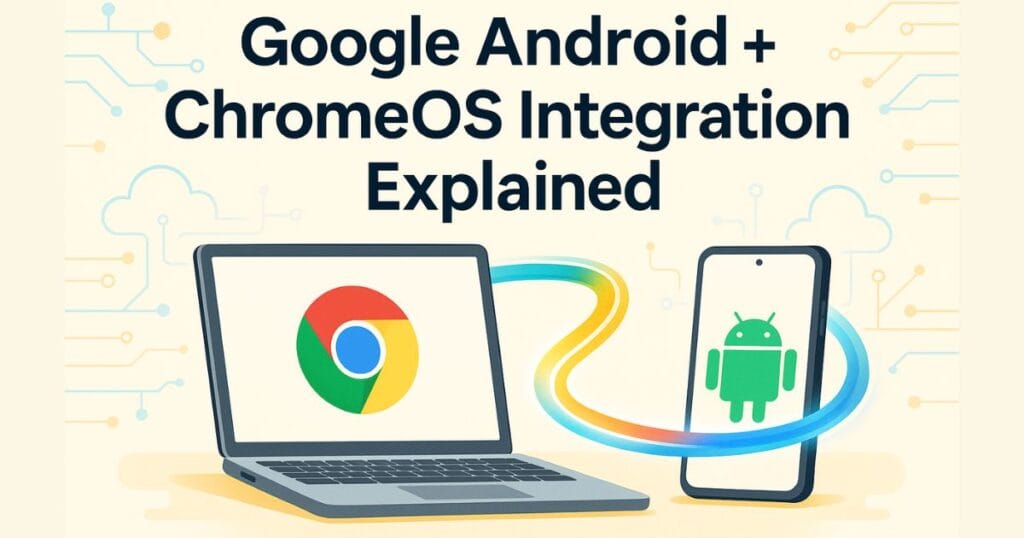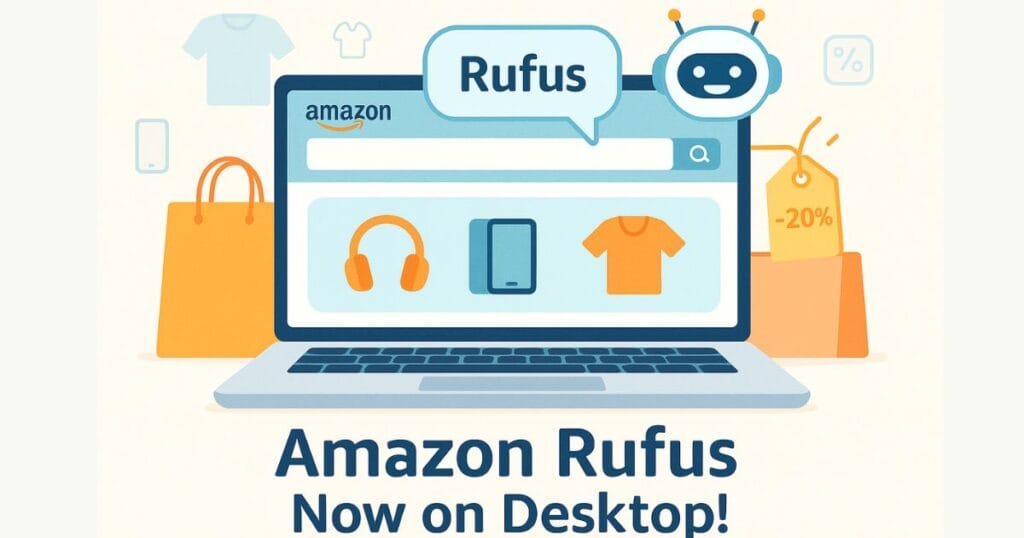Imagine if your Android phone and Chromebook could talk to each other effortlessly. You take a photo on your phone, and it instantly appears on your laptop, or you edit a document on your phone and continue working on it right where you left off on your Chromebook.

Google is making this a reality. The tech giant recently announced that it will bring its two major operating systems – Android (which runs on your phone) and ChromeOS (which powers Chromebooks) – under the same technology to transform how you use your devices and make technology more effortless for you.
What Exactly Is Google’s New Decision?
First, let’s clarify what Android and ChromeOS are:
- Android: The operating system that powers your smartphones and tablets.
- ChromeOS: The system that runs on Chromebook laptops, popular in schools, offices, and homes due to its lightweight and affordable nature.
Google has now decided to build ChromeOS on Android’s technology stack. This means the internal code and underlying system will be similar, allowing your phone and laptop to work together more seamlessly. However, ChromeOS will still look and function the way it currently does.
In simple words: Google is making your phone and laptop better friends.
How Will This Benefit You?
Better Connection Between Phone and Laptop
You will be able to continue the work you started on your phone directly on your laptop without hassle. Sharing files, transferring photos, and accessing data will become easier and faster.
Faster and Smoother Experience
ChromeOS will become faster and smoother by running on Android’s technology. You will experience less lag, better multitasking, and overall improved Chromebook performance.
Faster Updates and New Features
Since Google won’t need to maintain two separate systems, you will receive new features and security updates more quickly.
Improved Battery Life
If Google optimizes the software correctly, your devices will have better battery life, allowing you to work longer without interruptions.
Will Android and ChromeOS Look Different?
Not significantly.
- Android will gain laptop-like features, including multi-window support, external monitor connectivity, and the ability to run multiple apps side-by-side.
- ChromeOS will maintain its current look while becoming faster and smarter internally.
In short, Android will gain productivity-focused features, while ChromeOS will better support mobile-like experiences.
Why Is Google Doing This?
- To simplify operations: Google can save time and money by managing one technology stack instead of two separate systems.
- To enhance AI capabilities: Google can roll out Gemini and other AI-powered features across devices more efficiently.
- To compete with Apple and Microsoft: Apple’s products work seamlessly together, and Google wants to offer a similar seamless experience.
- To provide a unified user experience: Whether you use a phone, tablet, or Chromebook, your experience will feel familiar and smooth.
What Will Change for Developers?
- Developers won’t need to build separate apps for Android and ChromeOS anymore.
- Apps will run efficiently across phones and Chromebooks using a single codebase.
- Google will provide new tools and APIs to make app development easier and more efficient.
- Developers may face initial learning challenges adapting to the new system, but it will simplify their work long-term.
How Will This Impact Apple and Microsoft?
- If Google’s unified system delivers a seamless experience, it could challenge Apple’s iPads and affordable laptop markets.
- Microsoft’s Surface and Windows devices could also face competition, particularly in schools and small businesses where Chromebooks are popular.
- However, Apple and Microsoft are strong players, and Google will need to work diligently to compete effectively.
READ CHOREUNBOXED OFFICIAL
Will Chromebooks Be Discontinued?
No, Chromebooks will not be discontinued. Google has clarified that Chromebooks and ChromeOS will continue to exist. The only change is that ChromeOS will run on Android’s technology, making it faster, smarter, and more user-friendly.
When Will This New System Be Available?
It began this transition in 2024 and is actively working on it in 2025. It is expected that users will start seeing full benefits of the unified system by 2026.
Some features, such as running Android apps on Chromebooks, are already available, but it will take time for the complete integration to reach all users.
Is This Move Beneficial for Google?
- It will save time and money by maintaining a single technology stack.
- It will help Google roll out AI and new features faster.
- Users will receive a consistent, seamless experience across devices.
- If successful, it will strengthen Google’s position in the market.
However, the success of this move depends on its execution. If not implemented properly, it could lead to challenges.
ALSO READ- Google Search Launches New AI Mode in India: Usage & Benefits
Conclusion
It’s decision to integrate Android and ChromeOS under one technology stack is a smart, user-centric move. It will allow your phone and laptop to work together seamlessly, deliver faster updates, and enhance your overall digital experience.
If you use an Android phone or a Chromebook, get ready for a future where your devices work smarter, faster, and more intuitively for you.
Are you excited about this change? Let us know in the comments below!
What does Google’s integration of Android and ChromeOS mean for users?
Google is rebuilding ChromeOS on Android’s technology while keeping its current look. This means your Chromebook and Android phone will work together more seamlessly, allowing faster updates, smoother performance, and better cross-device functionality like file sharing, app continuity, and AI-powered features.
Will Chromebooks be discontinued after this integration?
No, Chromebooks will continue to exist. Google has confirmed that ChromeOS will not be discontinued but will adopt Android’s underlying technology to improve speed, battery life, and user experience without changing the familiar Chromebook interface.
When will this Android and ChromeOS unified system be available?
Google began this transition in 2024 and is actively working on it in 2025. While some features are already live, the full benefits of the unified system are expected to roll out gradually, with most users experiencing the complete integration by 2026 or later.


